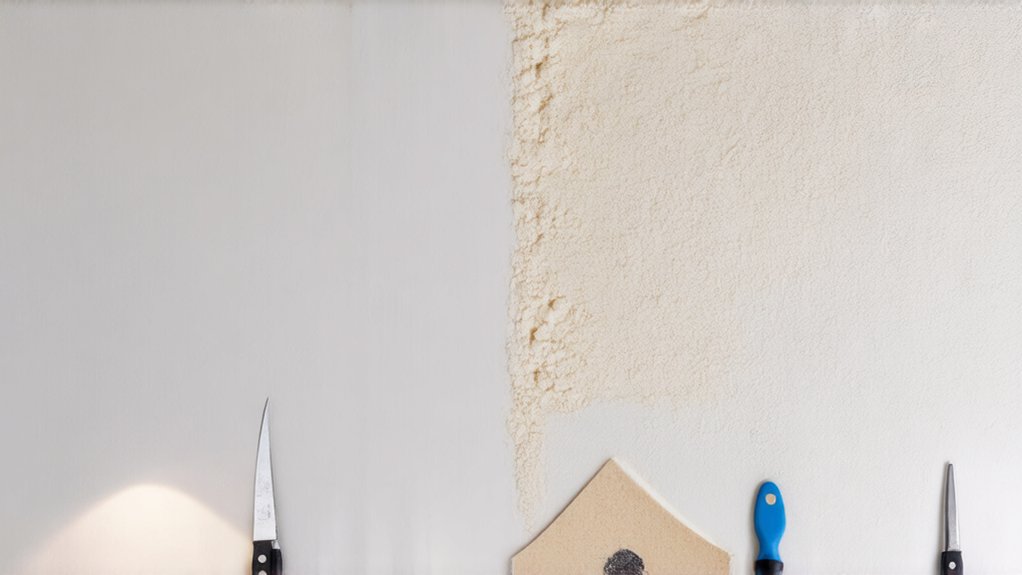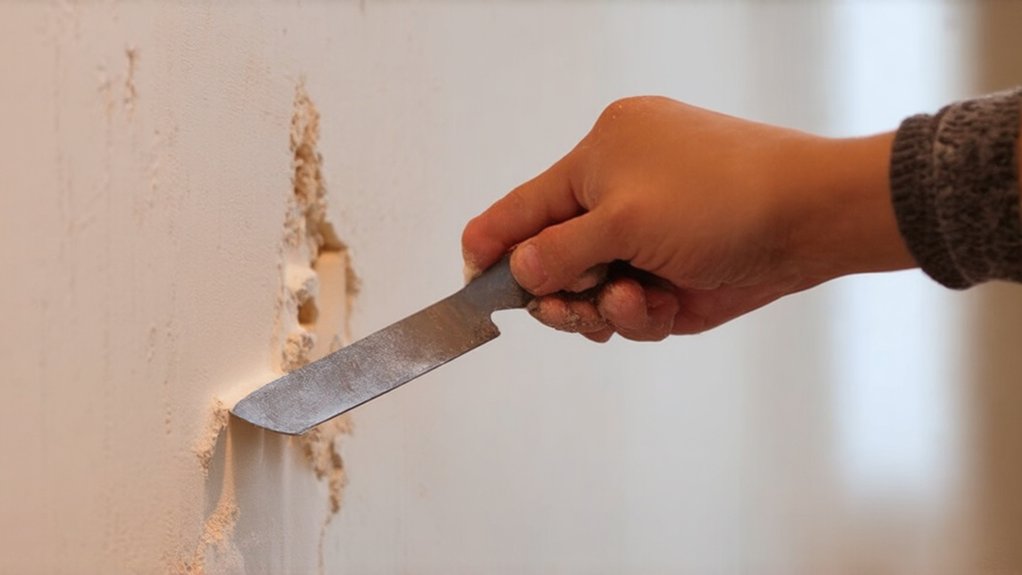Joint compound and spackle each serve distinct drywall repair needs. You'll want to choose based on the damage's size and depth. For larger holes and extensive repairs, joint compound provides smoother, more thorough coverage. Spackle works best for small nail holes and minor imperfections, drying faster and requiring less effort. Your choice depends on the specific repair, with each material offering unique advantages. Want to become an expert in your wall restoration technique?
Understanding the Basics of Joint Compound
Joint compound is the unsung hero of drywall repair, a crucial material that can convert damaged walls into smooth, professional-looking surfaces. You'll want to understand its mixing ratios and application techniques to achieve excellent results. Drywall repair costs can vary depending on the complexity of the project and the materials used.
Whether you're dealing with small holes or larger wall imperfections, joint compound provides a seamless solution. You'll need to mix it carefully, following manufacturer instructions for the right consistency. When applying, use a putty knife or taping knife to spread the compound evenly, building layers gradually.
With practice, you'll command this essential skill and transform your walls from damaged to flawless.
Exploring the Properties of Spackle
Although often confused with joint compound, spackle serves a distinct purpose in wall repair and restoration. You'll find this versatile material has unique characteristics that make it ideal for specific repair situations. Drywall installation experts in Erie, PA recommend spackle for precision repairs that require minimal surface disruption.
Key properties of spackle include:
- Faster drying time compared to joint compound
- Better for smaller repairs and minor imperfections
- Comes in various texture variations
- More suitable for specific application techniques
Spackle's lightweight composition allows you to quickly fill small holes, cracks, and surface blemishes. Its quick-drying nature means you'll spend less time waiting and more time perfecting your wall's appearance. Whether you're a DIY enthusiast or a professional, understanding spackle's properties can help you achieve smoother, more precise repairs.
Key Differences Between Joint Compound and Spackle
Many DIY homeowners and repair professionals find themselves puzzled by the subtle yet significant distinctions between joint compound and spackle. While both materials help repair drywall, their texture variations and application techniques differ considerably.
Joint compound is smoother and better for larger holes, covering broader surface areas with ease. Spackle, in contrast, works best for small nail holes and minor wall imperfections. You'll want to choose based on your specific repair needs.
Understanding these differences helps you select the right product, ensuring a professional-looking finish that blends seamlessly with your existing wall surface.
Choosing the Right Material for Your Repair Project
Selecting the right material for your drywall repair can make a significant difference in the final result. Your choice depends on several pivotal factors that'll impact the quality and durability of your repair.
Key considerations for your project include:
- Size and depth of the damage
- Desired smoothness of the repair
- Preparation steps required
- Specific repair techniques needed
Understanding these elements helps you choose between joint compound and spackle effectively. Joint compound works best for larger holes and seamless repairs, while spackle excels at small, shallow wall imperfections. By meticulously evaluating your specific repair needs, you'll ascertain a professional-looking finish that restores your wall's appearance.
Best Practices for Drywall Repair and Patching
How can you guarantee a professional-looking drywall repair that withstands the test of time? Start by carefully preparing your workspace and selecting high-quality materials.
When smoothing uneven surfaces, use a wide putty knife and apply gentle, consistent pressure to create a seamless finish. For filling larger holes, start with a mesh patch that provides sturdy support before layering joint compound. Sand between each coat, ensuring a smooth integration from the patch to the surrounding wall.
Work patiently and methodically, allowing each layer to dry completely. With practice and attention to detail, you'll achieve a flawless repair that looks seamless and professional.
Frequently Asked Questions
Can I Paint Directly Over Joint Compound or Spackle?
You'll want to sand the surface smooth first and apply a primer for the best paint finish quality. Your careful application technique guarantees a seamless, professional look that'll make your walls look like they were done by a pro.
How Long Does Joint Compound Take to Completely Dry?
You'll find joint compound's drying time varies based on moisture content, typically taking 24 hours for thin layers and up to 48 hours for thicker applications. Your patience guarantees a smooth, professional finish that'll make your repair look seamless.
Will Spackle Work for Large Holes in Drywall?
You'll need a different approach for large holes. Spackle won't cut it—you'll want to use drywall patch or mesh, properly preparing the area first. For substantial damage, joint compound provides better coverage and durability than standard spackle.
Do Professional Contractors Prefer Joint Compound or Spackle?
Pros typically prefer joint compound for larger repairs due to its versatility and smoother finish. You'll find contractors rely on joint compound's superior coverage and blending capabilities, making it the go-to choice for professional drywall work.
Can I Mix Joint Compound and Spackle Together?
You shouldn't mix joint compound and spackle together. While tempting to blend compound mixtures, professionals recommend using each product for its specific purpose to guarantee the best drywall repair results and maintain your project's wholeness.



